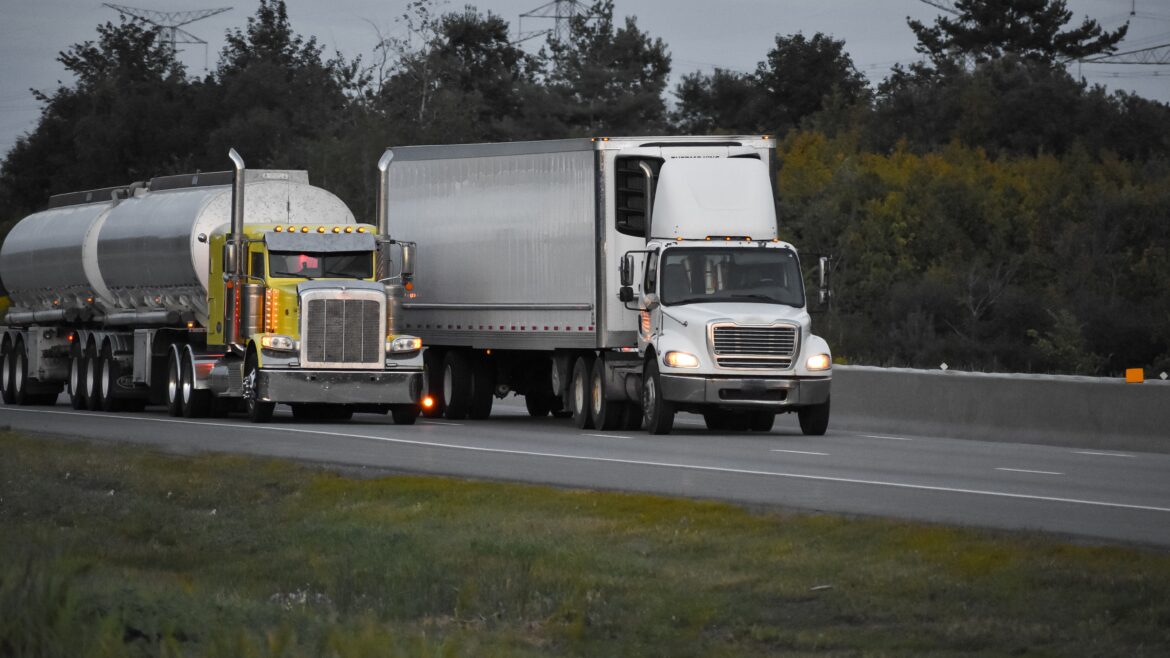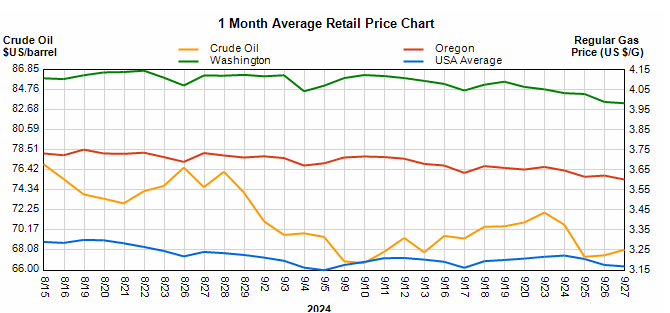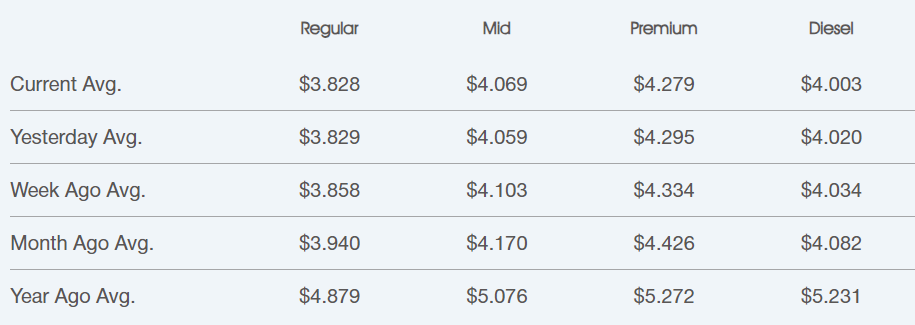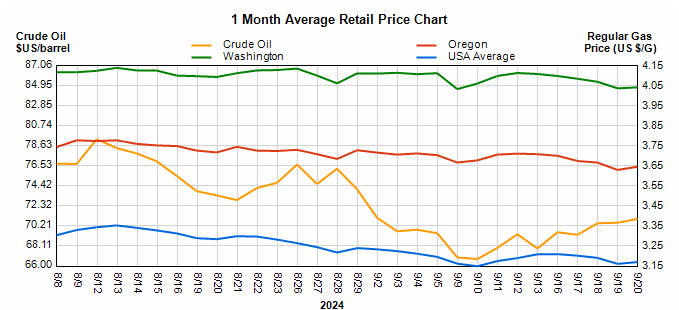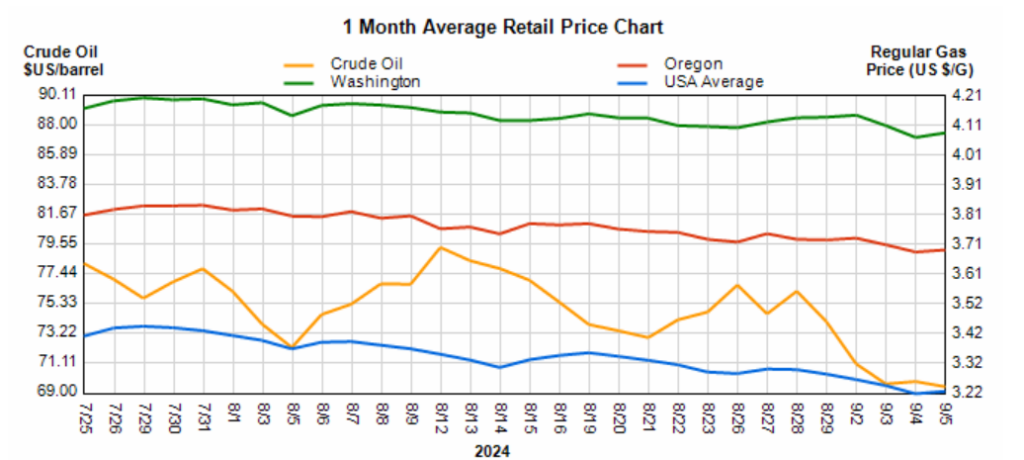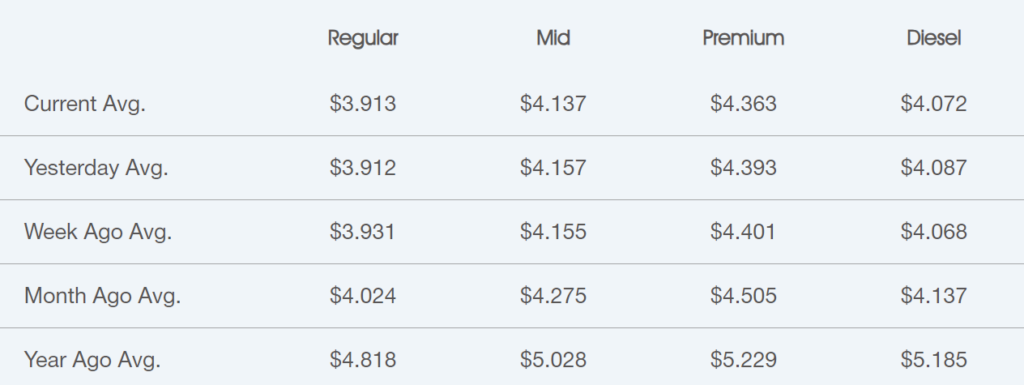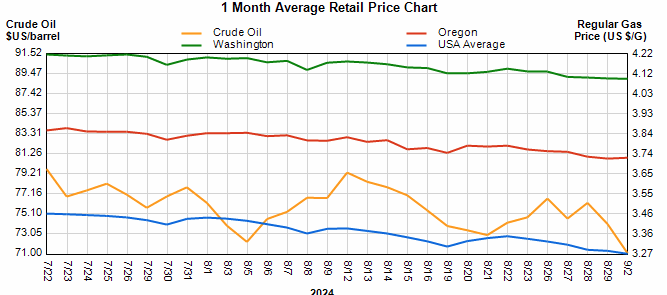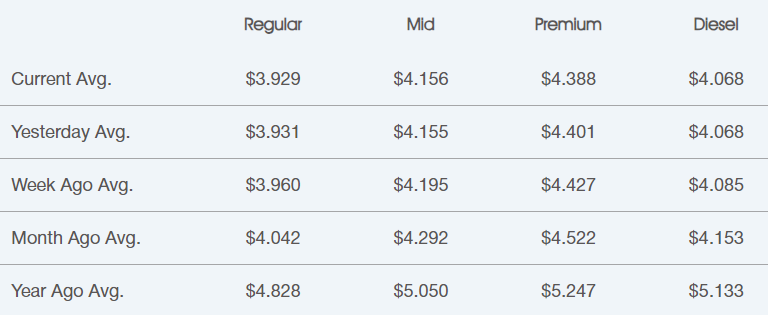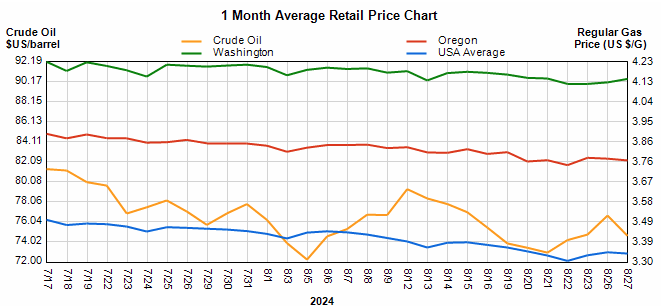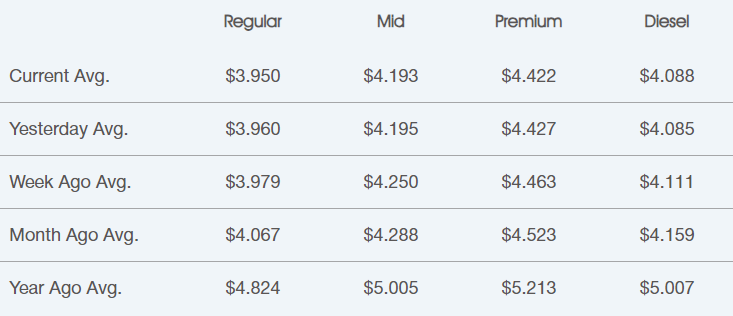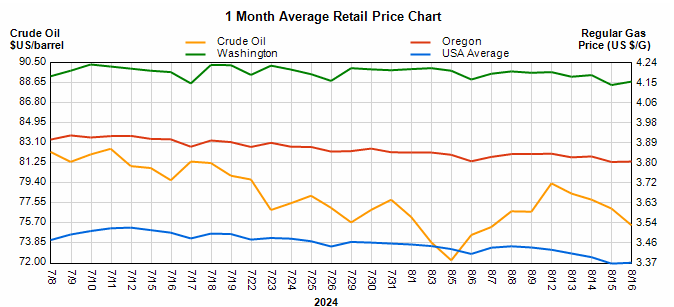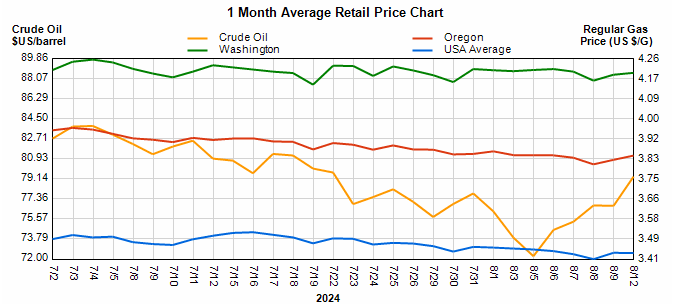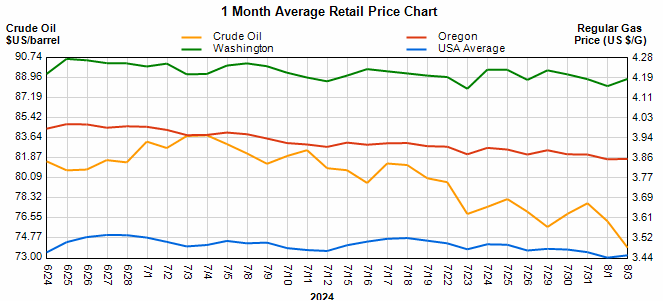Fuel Market Report: Sept 29th – Oct 5th, 2024
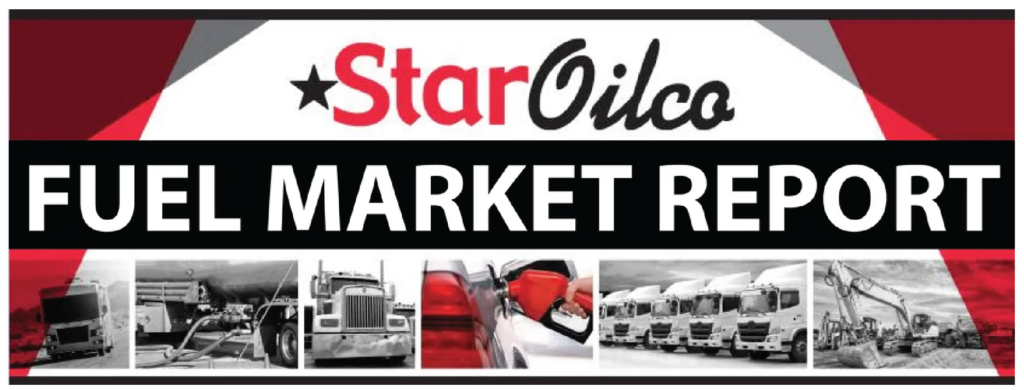
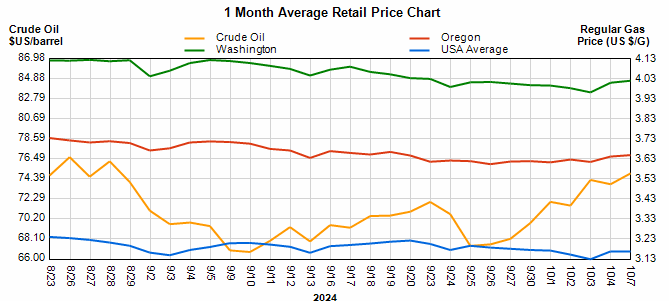
Wholesale Price Average 10/5/24
| Wholesale Low | Wholesale Avg | |
|---|---|---|
| E10 | $2.05 | $2.28 |
| B5 | $2.24 | $2.58 |
| B20 | $2.28 | $2.57 |
Average Retail Prices 10/5/24
| National | Oregon | Washington | |
|---|---|---|---|
| E10 | $3.18 | $3.68 | $4.04 |
| B5 | $3.59 | $3.81 | $4.35 |
Taxes
| Federal | State: OR | Local | State: WA | |
|---|---|---|---|---|
| Gas | $0.184 | $0.40 | $0-.13 | $0.494 |
| Diesel | $0.244 | $0.40 | $0-.13 | $0.494 |
Oregon Fuel Price Variance

Fuel Market News
Fuel prices jumped across the board this past week as rack averages are up in all product categories. Rack averages for E10 jumped $0.15/gal while B5 and B20 jumped over $0.17/gal. This is the largest jump we have seen in months. However, these shifts did not hit the retail market as the retail average only moved less than $0.05. The past weeks have been filled with stipulations on inflation due to the long shoremen strike and logistical challenges. Fortunately, the strike has been resolved for the time being and workers are back to the ports. Due to the resolution, we should see prices trickle back down over the next week.
US crude oil prices dipped below $70/barrel three weeks ago for the first time in a year pushing fuel prices lower across the board. Oil prices are still below $75/barrel. There are worries that OPEC+ may delay production increases into the fall which may cause upticks in domestic supply with low demand and further price dips.
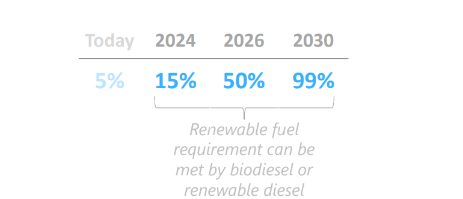
Important Note: Per the City Of Portland, “Distributors in the City of Portland are required to meet the minimum biofuel content requirements for all fuel they distribute beginning on May 15, 2024. All diesel fuel distributed to retail stations, non-retail dealers, or wholesale purchaser-consumers must include a minimum of 15% biofuel content, from either renewable diesel or biodiesel. This requirement increases to 50% on May 15, 2026, and 99% on May 15, 2030”.
Crude oil is trading below $75 this past week, at a current price of $73.66/barrel. This is $5.31 higher than it was last week. Despite the rise, oil prices are still relatively low.
Crude oil is the main ingredient for gasoline and diesel. Per AAA, on average about 50% of what you pay at the pump is the price of crude oil, breaking down as 25% refining, 11% distribution & marketing, and 14% taxes—a helpful breakdown for consumers wondering why they are paying the prices that they pay. Crude Oil is trading at $73.66/barrel compared to $68.35/barrel, last week and $79 a year ago.
It’s essential to recognize that fuel prices result from a complex interplay of the factors mentioned above and other factors regionally. Additionally, prices may vary by specific regions within Oregon and Washington. For the most precise and up-to-date information on fuel prices and the causes for these price changes within your area, use the links below for AAA & GasBuddy.
If you have any questions, feel free to contact Star Oilco and speak to one of our fuel market advisors to discuss how the market can impact your business.


